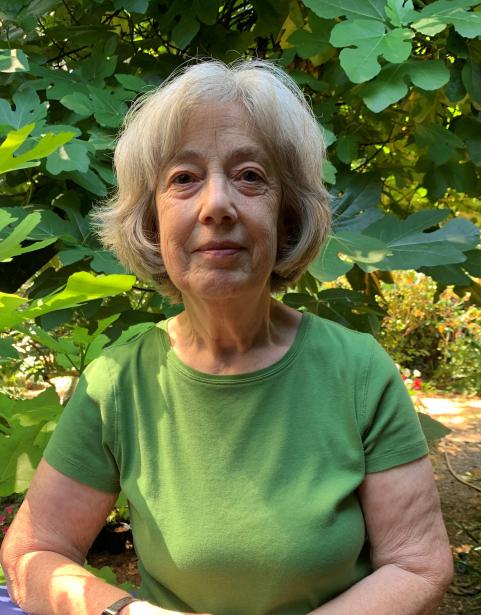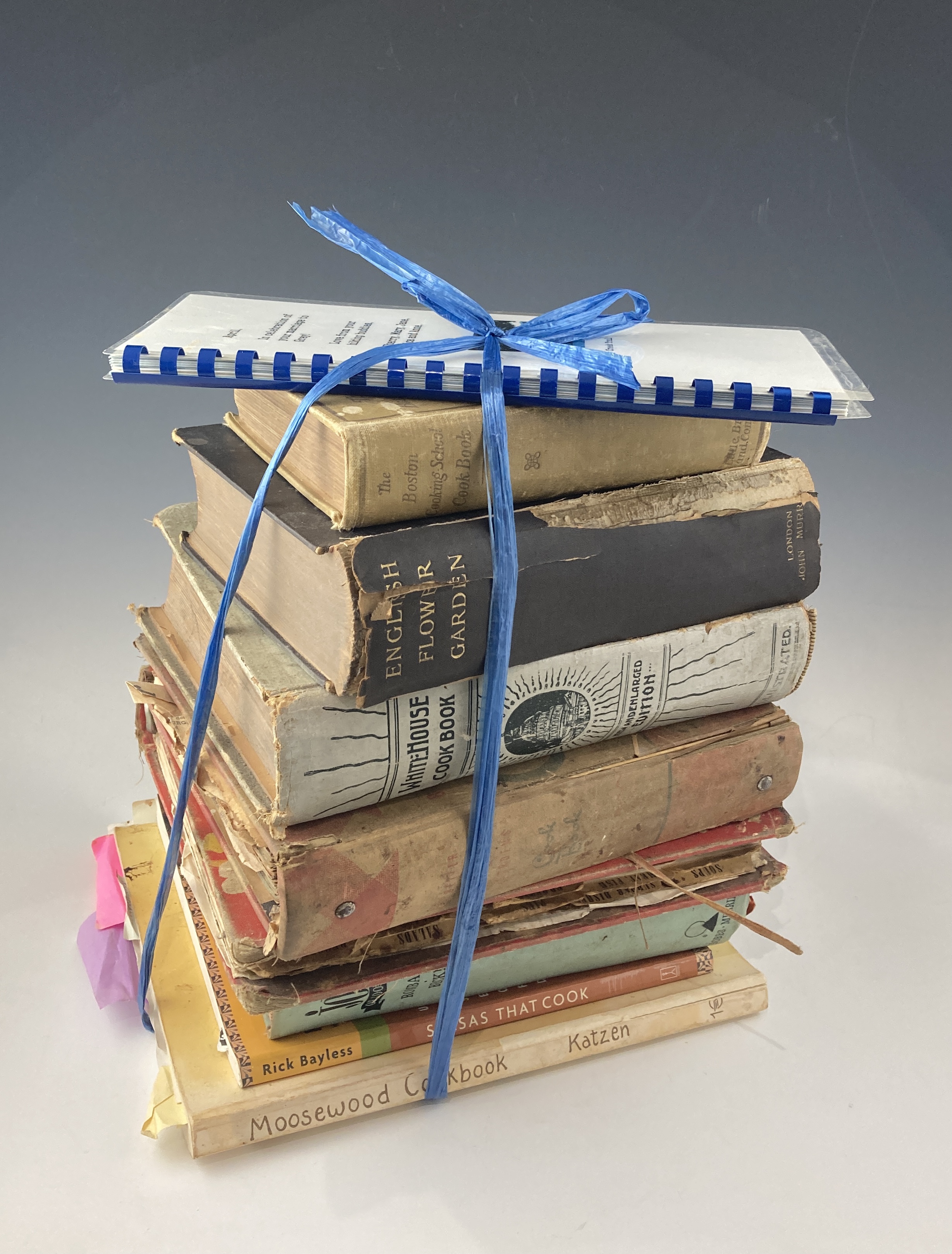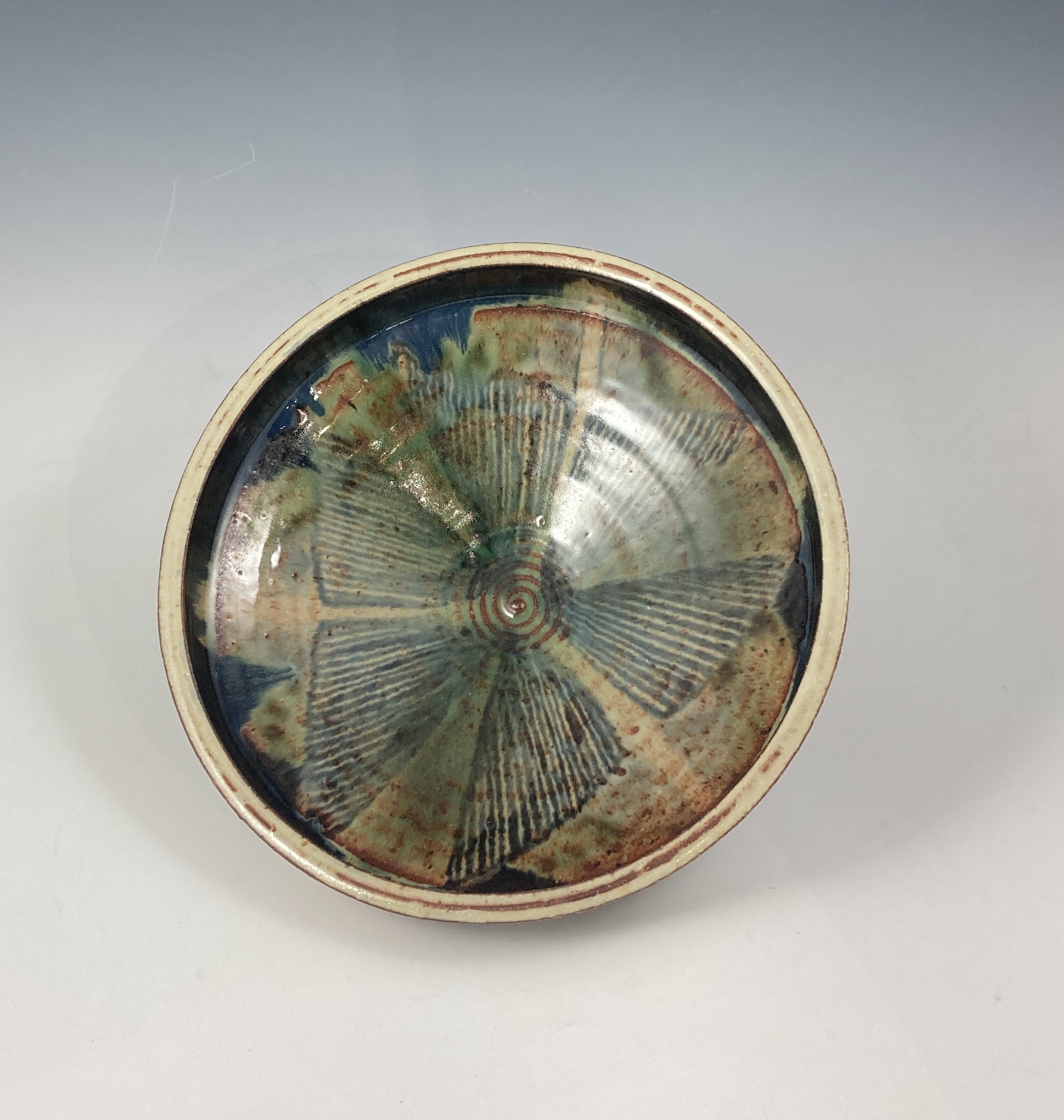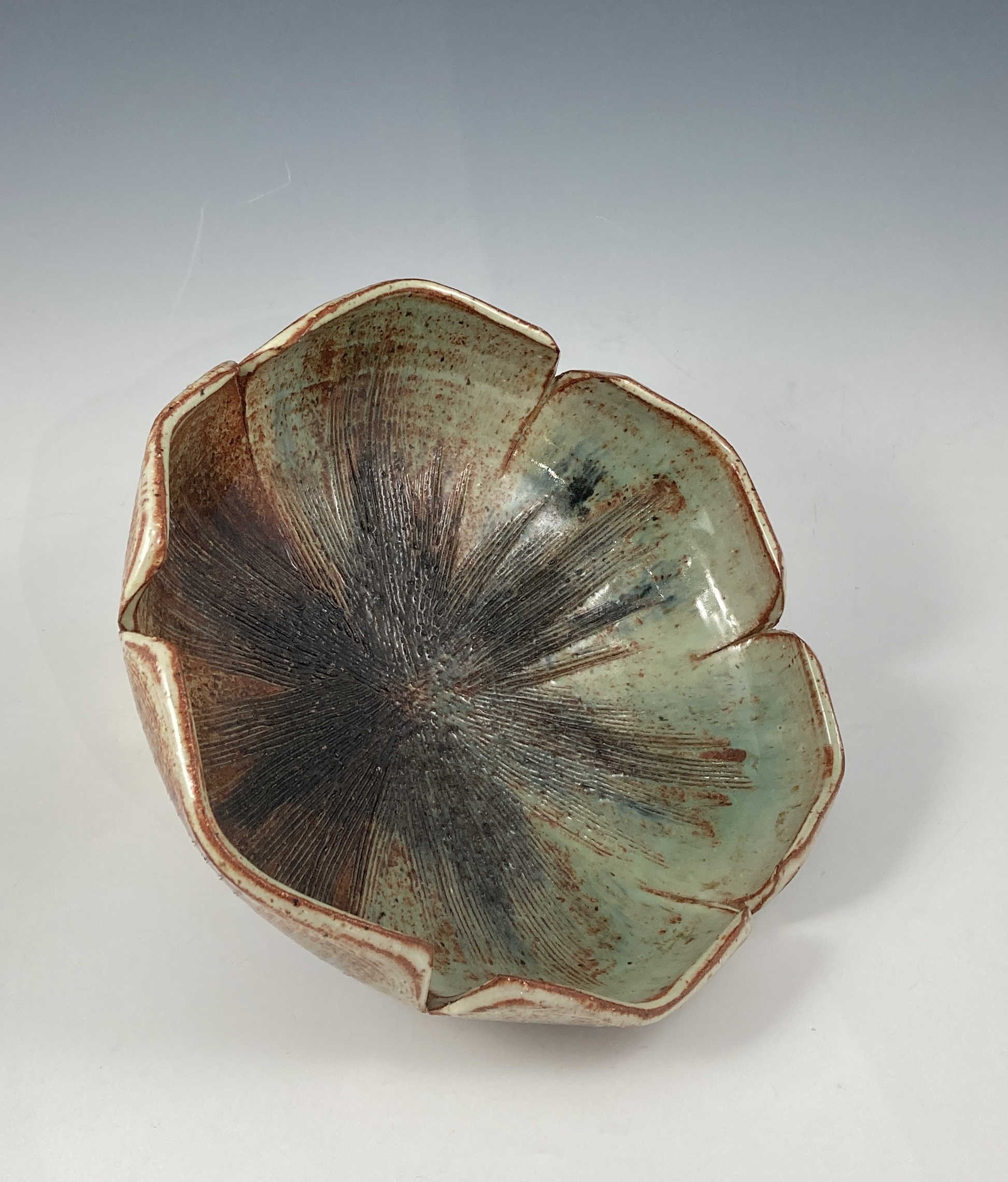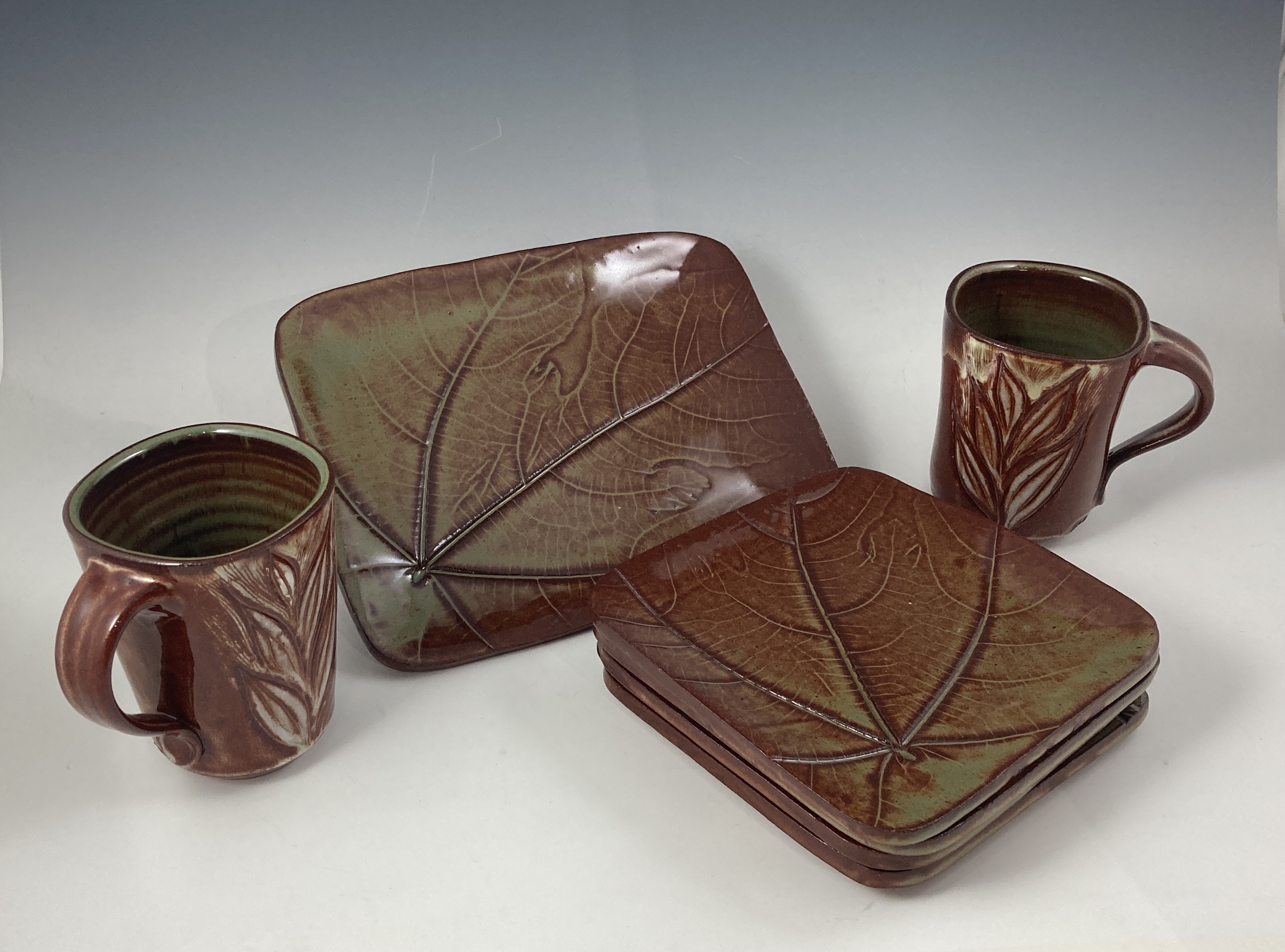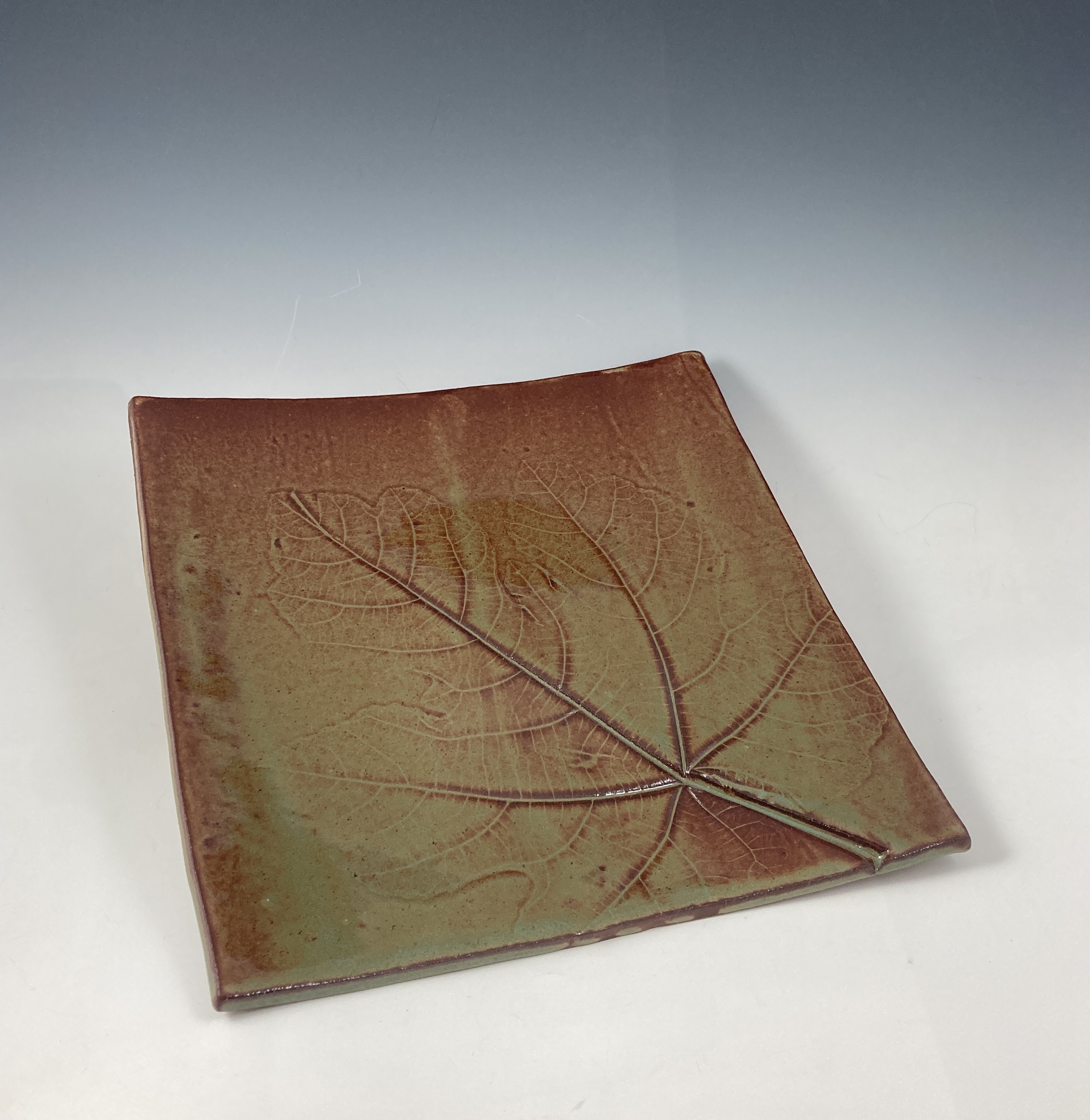I feel like a very lucky person. The work I’m exhibiting this year for the Faculty Exhibition, Pot Luck, represents not only my current work, but also the influences of my family’s history/traditions and the good memories of good meals at potlucks with family and friends.
I grew up in Seattle in a family with lots of kids, a mom and dad who loved to cook and grandparents a very short distance away who liked to feed us and enjoyed having us around their house and yard. Both my mom and grandmother loved to try new things and appreciated the fresh produce from their gardens and the Pike Place Market, back when it was truly a farmers’ market. My mom and dad, and my grandparents were avid gardeners. Planting flowers and shrubs happened each year in late spring; canning fruit and making jam was a late summer ritual. In the midst of this world, I was lucky to have the woods and Puget Sound of our neighborhood as a playground, and took lots of art classes throughout my childhood. I observed the plant life around me and started to cook by learning to make cakes when I was in junior high. As an adult, I’ve carried on those traditions: cooking, gardening, and enjoying the gathering of friends and family around food.
The stack of books in my portion of the exhibit is a legacy of family interests – family cookbooks and gardening books, and a few my own formative cookbooks, along with a collaborative cookbook of recipes close friends created to celebrate the wedding of one of us. As a group, these books form a narrative. The pots included in the installation also form a narrative – two of the bowls are from my early years as a professional potter; the others came out of the kiln this month and reflect my interest in our garden, as well as my interest in food and the gatherings surrounding it.
Unlike some kids, I loved school and vaguely imaged myself becoming a teacher someday. During my college years I jumped into art history and studio art courses, majoring in painting and drawing. It wasn’t until a couple of years later that I started to work in clay, mostly as a result of my husband, David’s interest, and the zeitgeist of the early 1970s when it was actually possible to make a living as full-time potters by living modestly and working hard. Living in a small town it was fun to connect directly to people who ordered pieces or bought the work you had on display.
Both of us studied pottery with a well-known master, Marguerite Wildenhain, who was both an excellent potter/teacher and a beloved mentor. Her summer workshops taught her students the elements of the craft and emphasized the importance of maintaining a sense of integrity and respect/ connection with nature throughout one’s life as an artist and human being. The friends we made in those years at Pond Farm Pottery are friends for life.
A few years later I began to be asked to teach community-based classes, and soon I realized that I enjoyed teaching as much as making pots. “Could it be possible to do both?” I asked myself. Teaching just one term at a community college taught me two things. The first thing it taught me: I loved that student body mix of students at the community college – so different from the narrow student body of my own college experience at Reed College, where everyone was, more or less, the same age, academic interests, etc. The second thing it taught me: I needed to get a graduate degree in order to continue to do this, so I soon began a graduate program in Art Education and later Art History at the University of Iowa in Iowa City. Early on in Iowa City I continued to work in ceramics, making pots and large architectural tiles and participating in establishing a cooperative designer-crafts gallery. But soon we were raising two daughters, I was teaching at the University’s Saturday and Evening program, and working on a dissertation. Not much time for ceramic work! But cooking, gardening and friends were always part of our lives. Just like the small town we lived in before Iowa City, potluck dinners with great food, conversation, laughs, and music were the best entertainment.
In 1995, I was hired to teach Art History at SPSCC. I was delighted to have the opportunity to fulfill my dream of returning to the Northwest to be near my family, and to help develop an art history and studio art program, and then eventually to teach ceramics when we moved into the new arts center building.
I retired from full-time teaching in 2014, and since then, working with clay has again become one of my main pastimes. I now have more time to garden, cook, read, and also continue to teach on a more relaxed basis, through community-based programs at the Senior Center, City of Olympia’s arts program, and occasionally at SPSCC.
Among the things I ask about works of art, whether they are made by “masters” or newcomers:
Who was the person who might have made this?
Why did they choose that medium?
Is there a “use” for this piece? If so, what might it be?
Why did they choose that size/shape/colors/texture?
Is there a “statement” and/or a “value” implied in this work?
And, so, I asked myself the same questions about the work I included in this exhibition, and here are my answers:
The person who made these pieces values her family and friends, and structures her life around her relationships with them. I feel incredibly lucky to have a large network of friends who share ideas, laughs, and recipes, and especially lucky to have two daughters and a husband who are the center of my life.
I chose clay because it is a kinesthetic, challenging medium that continually inspired advances in craftsmanship as well as aesthetics. It responds to your fingers as well as your imagination.
I enjoy creating work that can be used in daily life – once the piece leaves my hands and goes to someone else, I imagine a warm mug of coffee or a platter full of hors d'oeuvres being shared over a glass of wine, perhaps at a potluck. Another use of my work is related to community service – my husband and I donate the work itself or the proceeds from their sale to local non-profit organizations to help support our local community. That is another form of usefulness.
Because most of what I make is “useful” is human-sized, fitting into one’s hands. Shapes are chosen for their utility, and colors are limited to those that will withstand the high temperatures of stoneware firing. Textures are chosen for fun!
In the age of industrial production, handmade goods create a link between the maker and the user. The desire to make something “useful” is deeply embedded in our human nature. Handmade pottery is itself a link to the deep past – the oldest wares created by man still in existence today are ceramic objects, evidence that, as humans we’ve always tried to make things more useful and more beautiful.
